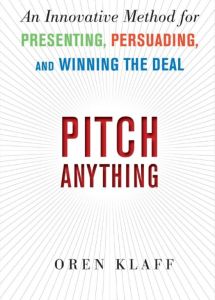Join getAbstract to access the summary!

Join getAbstract to access the summary!
Oren Klaff
Pitch Anything
An Innovative Method for Presenting, Persuading, and Winning the Deal
McGraw-Hill, 2011
What's inside?
Land your pitches by understanding how your buyers’ minds work.
Recommendation
Have you ever made a pitch or presentation that offered all the facts perfectly and countered every objection, but still fell flat after all your efforts? Investment banker Oren Klaff suggests that how you pitch is more important than how many pitches you throw. You can win your audience by knowing how the human brain reacts to new information and by learning how to control each interaction by using “frames.” With Klaff’s pitching method, you engage each listener’s emotional “croc brain” and keep your audience members in a state of “hot cognition” until you win their business. getAbstract recommends Klaff’s perceptive methods and illustrative stories to everyone who pitches and presents. You might have logical reasons to read this, but your emotional response is what will keep you interested.
Summary
About the Author
Oren Klaff is director of capital markets for the investment bank Intersection Capital, where his neuroscience-based pitches have grown the firm’s assets to $250 million.

















Comment on this summary